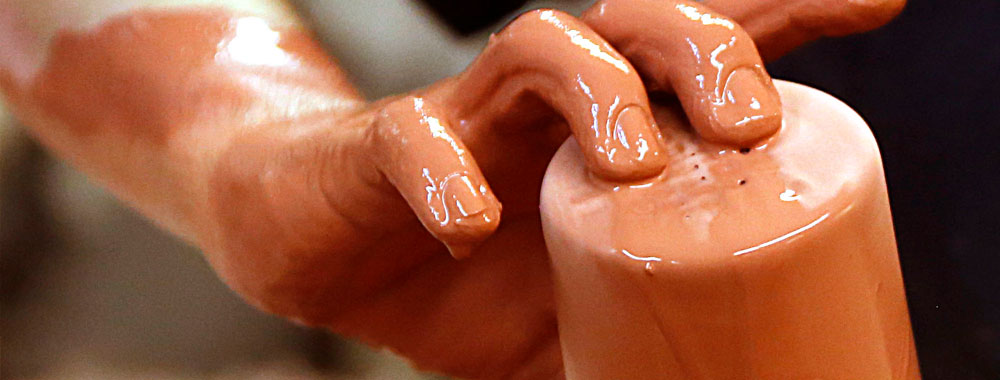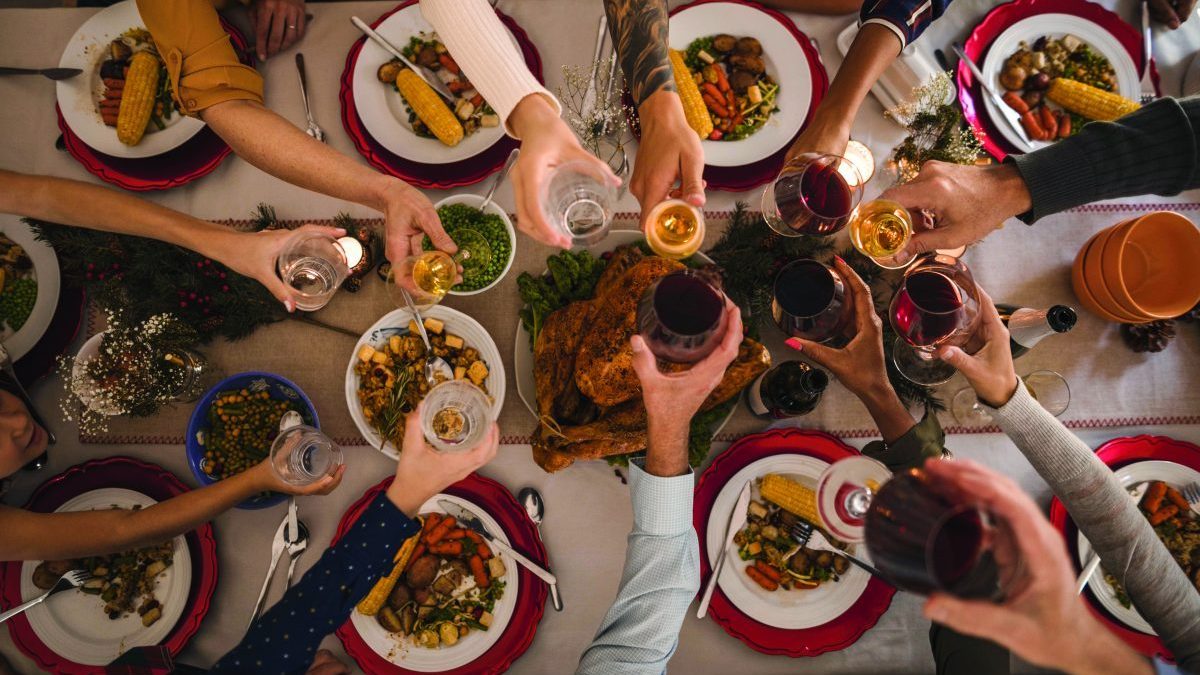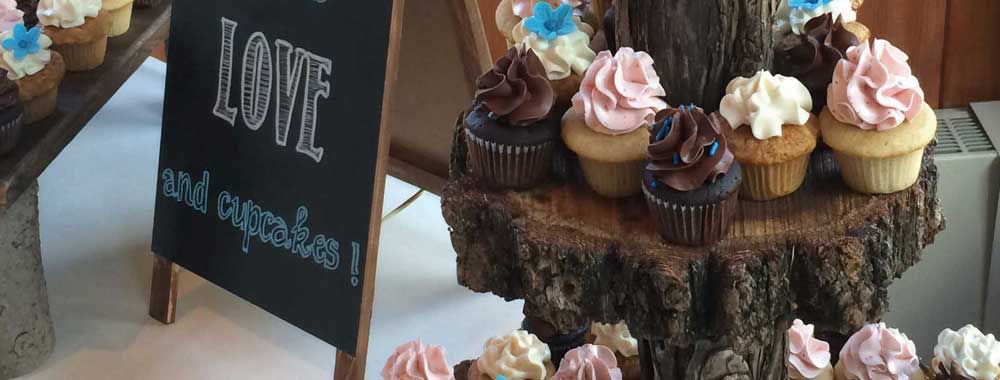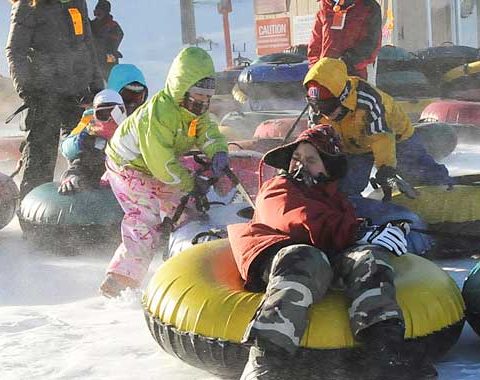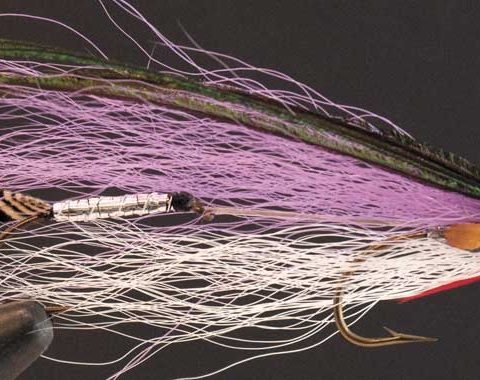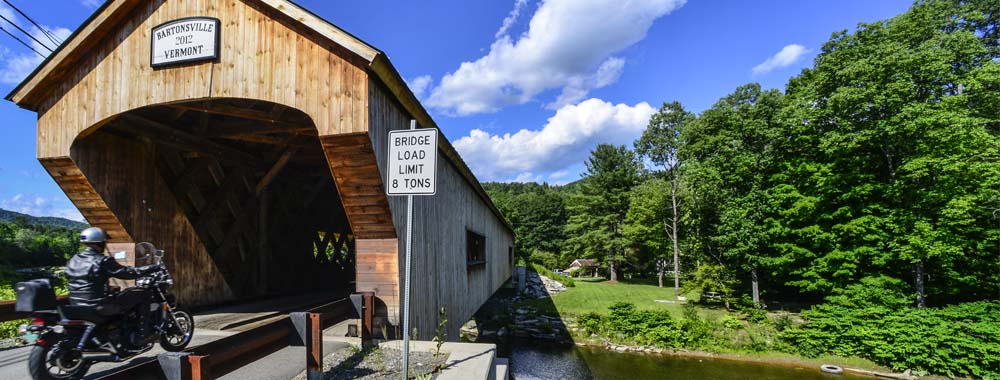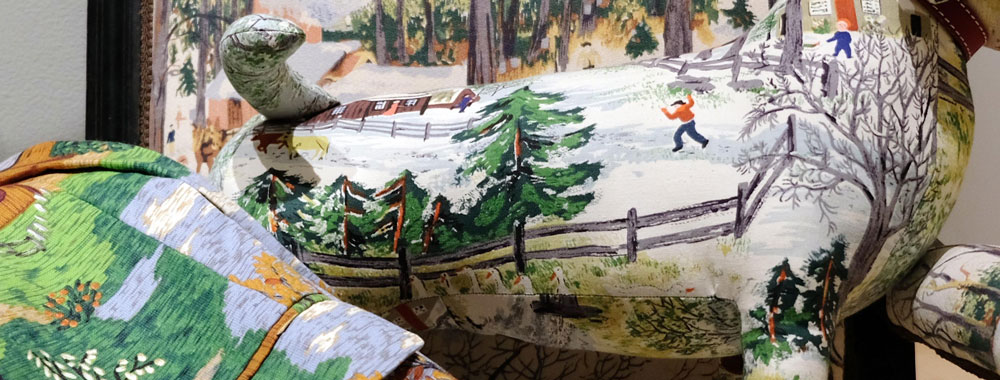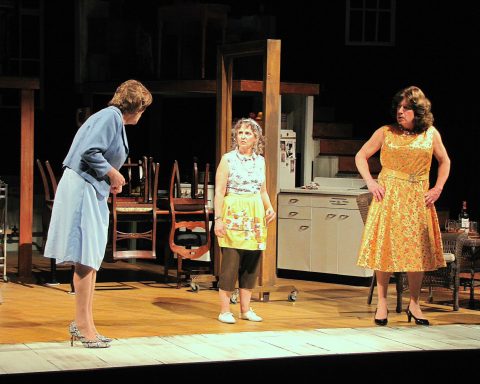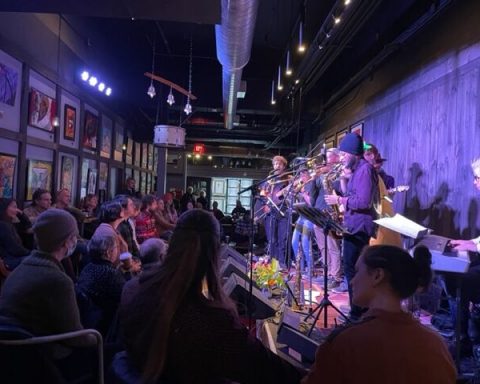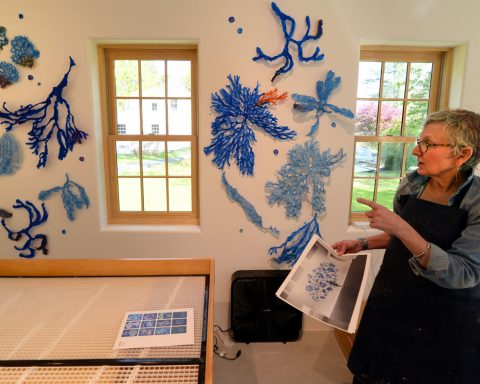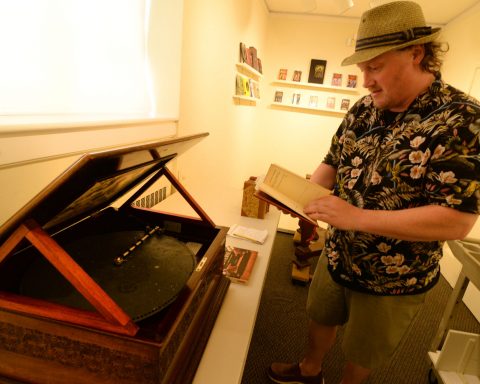By Francesca Shanks
It’s a Tuesday morning at Bennington Potters and as gray mist floats off the green mountaintops that surround this Southern Vermont city, two black cats stir in the cage of the pottery factory’s front-facing store.
Behind the scenes, workers are settling in to operate machinery that makes a custom mix of clay that will be transformed into the Bennington Potters’ signature mugs, plates and other items, all glazed in brilliant colors that show themselves after a good, long stretch in a 2,200-degree kiln.
The purpose and rhythm are apparent, and enviable. About a dozen potters work here (and they’re unionized), doing everything from working machinery that creates plates from clay discs to using fine tools for shaving down the slightest imperfections on mugs, butter dishes and other objects before they are glazed and fired.
Trevor Murray, who’s worked here for four years, supervises liquid clay being pumped into plaster molds. As two big tanks pump the clay into the mold, the plaster draws moisture away from the clay, creating a shell that gets thicker the longer it’s left in—creating mug after mug after mug. He checks the thickness, then leaves the molds upside-down to dry out. Once the mugs are ready to leave the plaster, a finisher will come and take the seams off, leaving a mug that will decrease in size by about 25 percent once it’s fired.

Across the factory floor, Jenny Stone sprays glaze on plates one at a time. Today, it’s the company’s classic blue agate coloring. Once she’s done, a burlapping process will remove any glaze that’s stuck underneath each piece of pottery—otherwise it would stick to the kiln during firing.
Chris, who declined to give his last name, is kiln master here. He’s worked here for 16 years, moving enormous kiln carts into a high-temperature, rectangular kiln via a trolley system. On average, the kiln fires between 650 and 750 pieces, using propane and air. It takes seven hours to get to the right temperature, and 24 hours to process each cart.
Chris can tell when to turn off the heat thanks to a method called “cone firing”: A brick with several pyramid-shaped pieces of clay is placed on the side of the kiln cart.
“Throughout the day I’ll be watching this device,” he says. When the heat hits the cones enough so that they bend over and look like eagle talons, the kiln has reached the right temperature—2,264 degrees. He’ll let the pottery soak in the heat for 30-45 minutes, then turn on an air blower, letting everything cool overnight. “At 2,200 degrees, I’m not going to open that door up,” he says—everything on the cart would crack from the drastic temperature change.
The clay used at Bennington Potters is a custom recipe supplied by Sheffield Pottery, and there’s enough of it to keep up with demand as the seasons ebb and flow. A lot of work is done ahead of the store’s annual midnight madness sale; October is always a big month for sales, the holiday season is also a busy time. “It’s really like a puzzle,” says Marketing Manager Melissa Colon—but a team of potters with decades of experience helps anticipate demand.
Many come here as young adults and stay for years. Dawn Fressola, the production manager, has worked here since she was 18. A second-generation potter, her father came to Bennington from New York in 1958 to work for David Gil, the company’s original owner/operator and the mind behind its aesthetic. Her mother also worked for the company.
When she was 18, Fressola put in an application. “Though at 18, working with my parents was the last thing I wanted to do!” she said. She just celebrated her 40-year work anniversary — and has carried on a family legacy. Her son, Jerry, works at Bennington Potters too.
Back in the showroom, customers browse stoneware glazed in all the colors of the rainbow, plus housewares and accessories that complement the style of Bennington Potters’ products. The cats, Satin and Slate, are out and about. Some customers, Colon says, come to the store seeking a replacement piece for dinnerware sets they’ve had for decades; some come for a visit because they know it’s a must-see Bennington spot.
One of the most popular items? The “trigger mug,” a mug with two finger holes as a handle. “It’s the famous standout among the pieces,” Colon says.
Colon points out that the bottom of many pieces are initialed—it’s common to see a “DF” for Dawn Fressola, for instance.
But the designs are all David Gil originals. Though he died in 2002, Bennington Potters’ owner/CEO and Gil’s wife, Sheela Harden is “on a mission, and driven to keep the business going,” says Colon.
If You Go
Bennington Potters is open daily for tours and welcomes groups. Email tours@benningtonpotters.com to schedule.
Bennington Potters Yard
324 County Street, Bennington, Vt.
800-205-8033
HOURS: Monday-Saturday: 9:30-6 , Sunday: 10-5
Bennington Potters North
127 College Street, Burlington, Vt.
802-863-2221
HOURS: Monday-Saturday: 10-6, Sunday: 11-5
